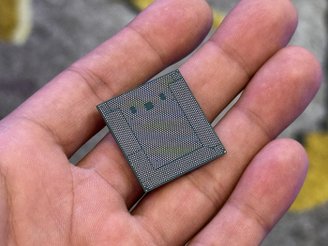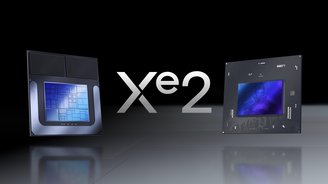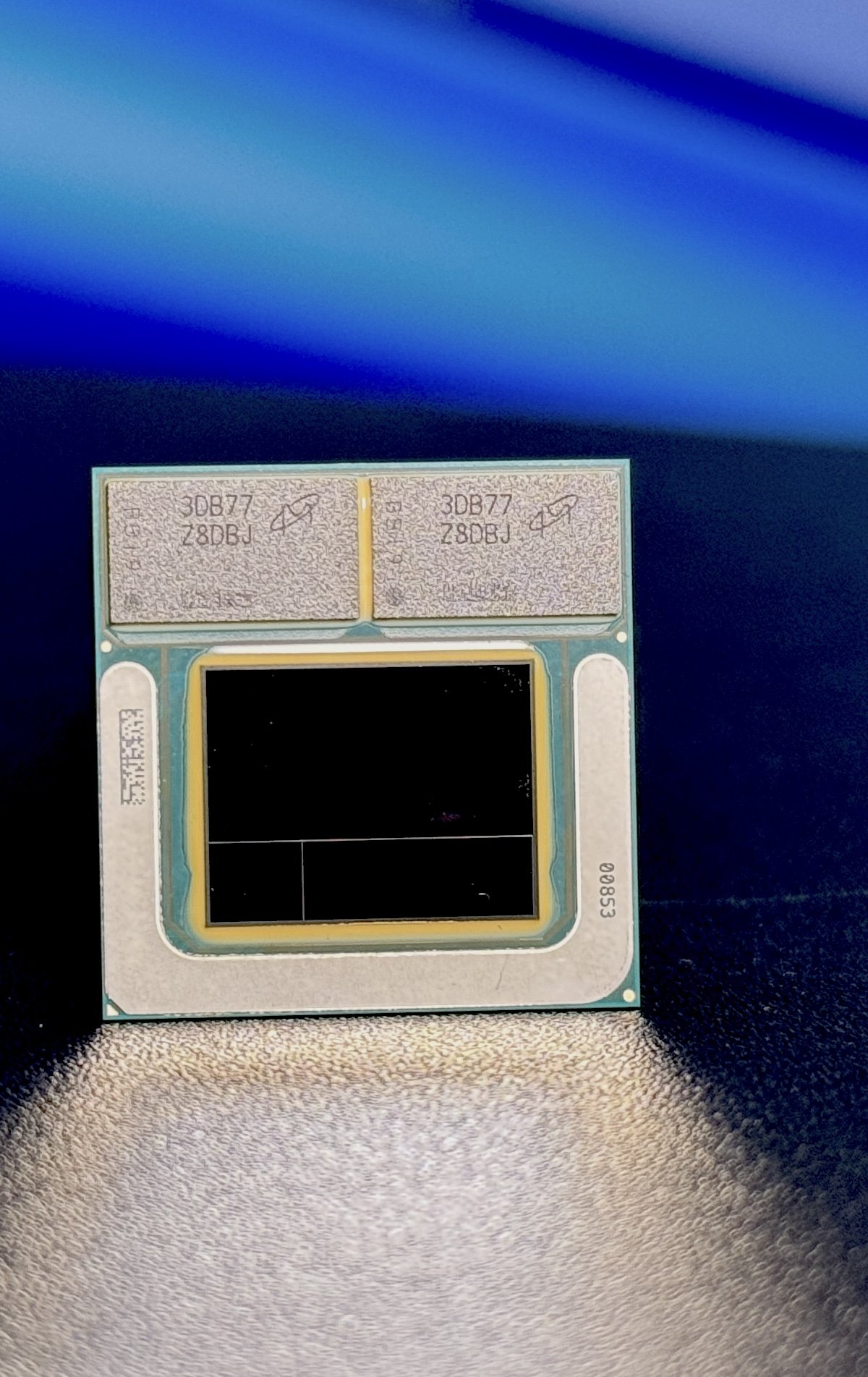The new Lunar Intel Lake processor architecture was officially announced this Monday (3). During Computex 2024 in Taiwan, the company announced its plans for the future of computers. Among the prominent features of the new generation: Intel leverages use of artificial intelligence (AI) to make laptops more powerful and with better battery management.
Moon Lake generation is coming Up to 120 TOP Power combining CPU, GPU and NPU (Trillion Operations Per Second):
-
GPU: There are 67 TOPs to accelerate graphics and content production with AI;
-
NPU: for example, there are 48 TOPs that are supposed to assist in creation and AI assistants;
-
Processor: TOP 5 that can handle lighter AI workloads.
Intel has high expectations for the launch of Lunar Lake. During the announcement, Intel vice president and general manager Michelle Johnston emphasized that the company is seeking market leadership.
“We’ll win on performance, we’ll win on graphics, and we’ll also win on AI“, quotes the executive. According to him, Lunar Lake will “reformulate everything you think about x86 architecture and transform the way people use their computers with artificial intelligence.”
The same statement is supported by Intel corporate vice president Rob Bruckner. He lists three waves of advancement of AI in the market:
-
first wave: focused on the machine learning class with a focus on versatility;
-
second wave: Microsoft introduced “productive forces”, citing the example of Copilot;
-
third wave: It should strengthen users’ skills and “transform the way we use our computers.”
A new microarchitecture in Moon Lake
Lunar Lake brings a new layer of computing to Intel’s product lineup. The line comes with eight cores, four of which are the E-core (Skymont) focused on efficiency and the other four P cores (Lion Cove) focused on performance.. This is a fully functioning hybrid architecture to guarantee greater power and efficiency as stated by the company. The processors also support up to 32 GB of dedicated memory (LPDDR5X) across two channels, but with a smaller footprint.
Lunar Lake performance cores have 2.5MB of L2 cache per core and up to 12MB of shared L3 cache. Efficiency cores have 4 MB shared L2 cache. This set, for example, promises to achieve higher performance without consuming too much energy, which means laptops can run longer without needing a new charge..
Intel guarantees that Lunar Lake can achieve high performance without consuming too much energy.

With the announcement, Intel also brings NPU 4 to market. The new Neural Processing Unit plays a critical role in the architecture; It promises improvements for more complete workloads, integration with the operating system and applications, and also focuses on multi-modal architecture for AI PCs.
According to Intel, the generational leap is huge. The Lunar Lake NPU achieves a higher operational peak, has a larger number of engines, achieves higher clock speeds, and provides architectural improvements that will positively impact performance and efficiency. It has two computing tiles and promises to reduce energy consumption by up to 20% with machine learning and artificial intelligence techniques.
-
NPU 1 (2018): 0.5 top of TOP;
-
NPU 2 (2021): The top of the 7 TOPs;
-
NPU3 (2023): 11.5 top of TOP;
-
NPU 4 (2024): 48 pTOP.
According to the company, These next-generation AI PCs promise to deliver up to 40% lower energy consumption – Compared to Meteor Lake on SoC (system on chip). Laptops equipped with the processors should also have better performance per core, a “giant leap” in graphics, and “unique AI computing.”
In terms of connectivity, on Lunar Lake we have compatibility with Wi-Fi 7, Bluetooth 5.4, Thunderbolt Share and PCI Express 5.0 as well as Thunderbolt 4.
Intel’s roadmap includes the launch of Lunar Lake generations in the third quarter and Arrow Lake generations in the fourth quarter. The company is due to launch the Panther Lake line for 2025.
The Most Powerful Gaming Laptops
Another important development that Intel highlights is the new Xe2 GPU.. makes a promise More than 80% performance increase in games and more than five times more than the previous generation for AI applications. Its architecture should also improve screen usage and media playback on devices.
We saw a demo of the F1 2024 game during the announcement, a day before the official launch. It was running on a pre-production laptop that shipped with Lunar Lake. The company clarified that the device does not run in native Full HD, but is reproduced at a constant 30fps at 1080p resolution via upscaling.

The suggestion here is relatively simple to understand: Lunar Lake should enable thinner and more portable laptops to have more features of this type for higher quality gaming.
The new Xe2 GPU architecture features eight Xe cores, 64 vectors, 8 ray tracing engines, and supports 16 compute layers in addition to XMX engines. In a practical example running Stable Diffusion, The new generation managed to render an image from a text command in just 6.3 seconds compared to 13.2 seconds in the previous generation..
In terms of content playback, the new generation supports the use of a 60 fps 8K monitor with HDR or three 4K monitors with 60 fps (HDR) at the same time. It can also achieve up to 360fps with displays at 1080p or 1440p resolution and is compatible with HDMI 2.1, DisplayPort 2.1 and eDisplayPort 1.5.
When it comes to visual content playback and streaming, Intel touts the use of Display Content Coding and VVC technologies.
VVC has an important role in reducing the bitrate without losing quality at certain times, such as when the internet is unstable, and it can also reduce the size of transferred files. Screen Content Coding should enhance features like screen sharing, remote computing, and game streaming.
But the highlight here is power consumption: Decoding acceleration can consume 2W to 3W during playback on Lunar Lake, while Meteor Lake throughput can reach around 29W.
What to do with all this power applied to artificial intelligence?
According to Intel Fellow Tom Peterson, the Lunar Lake NPU promises 73% lower latency, lower operating costs, and privacy while using AI resources natively. This will result in laptops having the ability to run AI features, ensure user privacy, and enable advanced functions.
Peterson states that more than 350 resources and algorithms are expected to arrive by 2025, and many are already under development. Additionally, the company underlines that more than 500 AI models are currently supported by Core Ultra processors.

For managers, we are no longer talking about a system that turns “text into something”, but a system where artificial intelligence can do “anything into anything”.
Here’s how the company explains how it works: It will be easier to use texts, images, videos, speech, sounds, and even brainwaves to translate, produce, and classify everything together. This is the logic detailed by Peterson to determine this broader usage.
Here we can highlight resources and tools such as famous chatbots, artificial intelligence assistants, voice recognition and rendering, rendering from text commands, meeting summarization, code generation, image upscaling, contextual search and much more.
*The journalist went to Taipei, Taiwan, upon the invitation of Intel.
Source: Tec Mundo
I am a passionate and hardworking journalist with an eye for detail. I specialize in the field of news reporting, and have been writing for Gadget Onus, a renowned online news site, since 2019. As the author of their Hot News section, I’m proud to be at the forefront of today’s headlines and current affairs.










